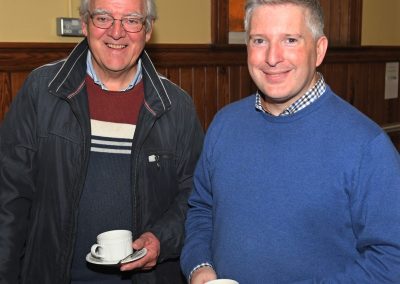Book Launch
Editor of this publication, Fr Eugene Duffy, offers an overview of the issue at the centre of this collection of essays – the restructuring of Irish Dioceses.
Featured in Irish Times Monday September 26th, 2022
______________________________________________________
The Second Vatican Council expressly requested that “a prudent revision of diocesan boundaries be undertaken as soon as possible”. It went on to say: “This can be done by dividing, distributing or uniting dioceses, changing their boundaries or appointing a more suitable place for the episcopal See, or finally, and especially in those dioceses which comprise large cities, by establishing a new internal organisation.”
Such reorganisation of dioceses has happened in other parts of the world where, for example, many smaller dioceses have been merged, large dioceses have been divided or new dioceses have been established. The question of diocesan mergers is only beginning to surface in Ireland.
Last February, Pope Francis announced that he was appointing the Bishop of Clonfert to be also the bishop of the neighbouring diocese of Galway, on the retirement of the incumbent. The new arrangement has been described as “the union of the two dioceses in the person of the bishop.”
This, then, is the first time that the mandate of Vatican II has been applied in Ireland. There is a general expectation that this is just the beginning of a process of rationalisation of the Irish diocesan landscape, despite the fact that there has been no public discussion initiated by church leadership regarding how this might best be done.
It is opportune that the Irish bishops who have committed the Church in Ireland to a synodal pathway would include this issue of diocesan restructuring as an important item on the agenda. Following the Council, Pope St Paul VI recommended that a wide consultative process be used in determining the reorganisation of dioceses.
A diocese with its bishop is a non-negotiable aspect of ecclesial organisation. It has a primarily pastoral mission. Therefore, it should be of such size that the bishop can know his ministers and his people; have the capacity to give expression to the nature of the church; have the resources of personnel and finances to carry out its mission; and be capable of generating a sense of identity and belonging for its members.
Although a diocese does not always have to be defined by a geographical territory, this remains normally the case. Two issues then come into play, population and geographical space. The Irish situation is challenging in both these respects.
There are huge imbalances among the 26 Irish dioceses, territorially and demographically. The population of the Dublin diocese exceeds the combined populations of the 13 smallest dioceses. Several Irish dioceses are very small by international standards, some with populations of fewer than 40,000 people.
The current diocesan boundaries were set down in the 12th century and have remained largely unchanged. Even then, the fixing of boundaries was challenging pastorally, politically and economically.
Now the attachment to these boundaries is more on the part of the clergy than on the part of the lay faithful, but even these clerical loyalties are waning. Furthermore, the Irish diocesan boundaries no longer coincide with any other civil administrative or political units on the island, whereas the 12th century boundaries were also of political significance.
Dioceses should normally generate, or at least be based on, a sense of place and a sense of identity. Thus, they often rely on existing spaces that yield the possibility of forming a sense of belonging. In the current Irish context, the existing county boundaries may offer such a possibility since these are already units for local government and are used by several social and sporting organisations to foster senses of identity, loyalty and belonging.
The Second Vatican Council showed that merging or dividing dioceses are not the only ways to address restructuring. It allows for other possibilities, for example, the deployment of episcopal vicars to oversee specific regions of a large diocese; and the better use of the metropolitan/provincial structure, whereby various responsibilities might be centred in the provincial offices and then smaller dioceses could attend to their more immediate pastoral demands.
Indeed, a genuine collegial approach by bishops, willing to share resources and facilities across diocesan boundaries, could also address some of the difficulties faced by smaller or less populous dioceses.
Merging neighbouring dioceses as individual bishops retire is not the best solution in the long term. Ultimately, the solution demands inclusion for consideration in the synodal processes currently under way. Indeed, it is unthinkable that an Irish synodal process would not engage with the question of restructuring dioceses when there is such an urgent need to do so.
_____________________________________________
Rev Dr Eugene Duffy is vicar for pastoral renewal and development in Achonry diocese. His book The Restructuring of Irish Dioceses was launched in St Nathy’s College, Ballaghaderreen, on Friday September 30th
THE RESTRUCTURING OF IRISIH DIOCESES
Published by Dominican Publications


















